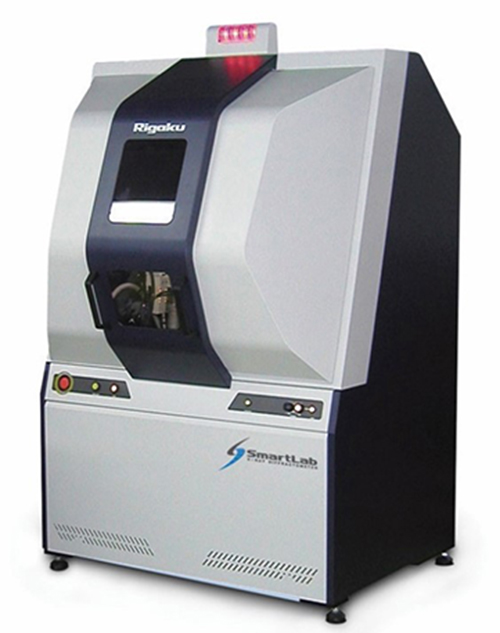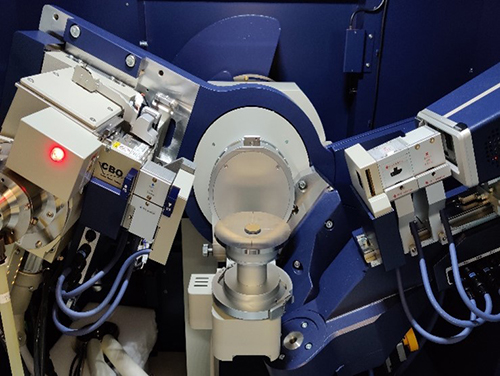

Available Methods and Accessories
The SmartLab is a diffractometer with a modular design for standard and non-conventional XRD applications due to its versatility; it can be easily switched between Bragg-Brentano (powders) and Parallel-beam (thin-film) geometries. It is equipped with a high power, 9 kW Copper rotating anode, which generates a high flux of X-ray intensity and a HyPix-3000 1D/2D detector for fast collection times. The capabilities of this instrument include powder XRD, X-ray reflectivity, grazing incident XRD, high-resolution XRD, in-plane scans, reciprocal space mapping, rocking curves, pole figures, and residual stress. Furthermore, an Anton Paar DCS-350 stage allows in-situ scans from -100 °C to 350 °C.
Sample Requirements
Ordered/crystalline and semi-crystalline materials:
- Powders: 0.05 g – 2 g
- Solids: from few mm3 to 120 mm (diam) x 25 mm (height)
Summary of Technique
The XRD instrument works by irradiating a sample with a beam of incident X-rays while the beam and detector move in a synchronized motion. The crystalline parts of the sample exhibit long-range order of repeating arrangements of atoms, molecules, or ions, diffracting the X-rays into many specific directions. The signal produced by the sample is recorded in a diffractogram displaying the scattered intensity as a function of the angle of diffraction. This pattern reveals information related to the atomic structure of the sample.
Information Provided & Detection Limits
XRD provides information on atomic or molecular crystalline structure, phases, preferred crystal orientation, and other structural parameters, such as crystallite size, strain, and crystal defects. Furthermore, XRR allows studying the thickness, roughness, and density of amorphous and crystalline smooth thin films.
Detection limits. XRD detection limit is usually in the range of 1-2% vol.
Lab Location and Contact Information
Location: IPB X-ray Laboratory
Lab Manager: Daniela Morales
daniela.morales@uconn.edu
860-486-1824